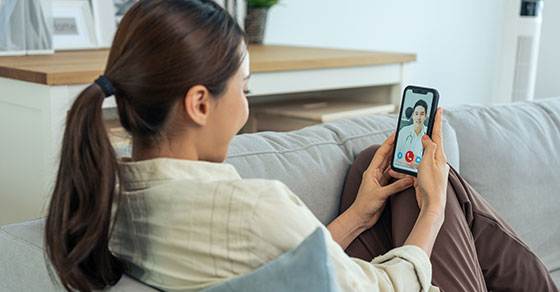
Introduction
Trazodone is often praised for its versatility, it’s prescribed for everything from depression to insomnia. But here’s the kicker: while it’s technically not considered addictive in the same way opioids or benzodiazepines are, that doesn’t mean you’re totally in the clear. In fact, people all over are starting to ask the same big question: Can trazodone actually lead to addiction? The answer isn’t as black and white as you might think.
More and more Canadians—especially those using trazodone off-label for sleep—are reporting a creeping dependence. Some can’t fall asleep without it. Others start taking higher doses without their doctor’s go-ahead. There’s also growing awareness that, when mixed with other substances, trazodone’s sedative punch can become dangerously habit-forming. So, what gives?
In this guide, we’ll unpack the real deal behind trazodone side effects, misuse, and when you should raise a red flag. Whether you’re taking it yourself, worried about a loved one, or just curious about what happens when this “non-addictive” drug goes sideways, you’re in the right place.
Key takeaway: Trazodone may not be classically addictive, but dependency, misuse, and dangerous side effects are real—and rising.
Understanding Trazodone
What Is Trazodone Prescribed For?
Trazodone belongs to a class of medications called serotonin antagonist and reuptake inhibitors (SARIs). In Canada, it’s approved to treat major depressive disorder, but it’s frequently prescribed off-label for insomnia, anxiety, PTSD, and even certain types of chronic pain.
Unlike stimulants or traditional sedatives, trazodone works by increasing serotonin levels in the brain. It blocks specific serotonin receptors while mildly inhibiting serotonin reuptake, which helps improve mood and regulate sleep. Its unique mechanism makes it a popular alternative to medications known for their high abuse potential, such as benzodiazepines.
That said, just because it’s different doesn’t mean it’s harmless. While trazodone doesn’t create a high, its calming, sleep-inducing properties can cause psychological dependence—especially when used nightly to manage sleep issues.
For individuals seeking non-addictive help for sleep-related concerns, it’s important to explore holistic alternatives like medical-grade facials or relaxation-based skin therapy that may help reduce underlying anxiety contributing to insomnia.
How It Works in the Brain
Trazodone increases serotonin activity, helping stabilize mood and promote sleep. However, it also has a strong sedating effect, similar to antihistamines. That’s why many users report feeling heavily drowsy within an hour of taking it—even at low doses such as 25 mg.
This drowsiness is what makes it such a common off-label sleep aid. But that’s also where the trouble can begin. People using it purely to fall asleep may begin to rely on it. Over time, tolerance builds. The body needs more of the drug to achieve the same effect, and this can pave the way to misuse.
Stopping trazodone suddenly can trigger withdrawal symptoms like anxiety, rebound insomnia, irritability, and nausea—all of which reinforce the need to keep taking it. Many people in this cycle don’t even realize they’ve developed a dependence until it becomes a pattern they can’t break on their own.
Off-Label vs. On-Label Use
In Canadian clinical settings, off-label prescribing is common. However, trazodone is often over-relied upon for issues it wasn’t originally meant to treat—especially sleep disorders.
For someone dealing with sleepless nights, increasing trazodone without medical guidance feels like a small step. But when taken at higher doses or without supervision, it can increase the risk of adverse effects and a pattern of dependency.
For clients exploring sleep support or mood balance without medication, the Metamorphosis Centre’s wellness treatments offer alternatives that complement a healthy lifestyle and reduce the need for sleep aids or sedatives long-term.
Key takeaway: Trazodone isn’t just an antidepressant—it’s a powerful sedative. When used off-label, especially for sleep, it can quickly become habit-forming without proper medical guidance.
Can Trazodone Be Addictive?
The Misconception: “Non-Habit Forming”
One of the biggest myths about trazodone is that it’s “non-addictive.” While it’s true that trazodone doesn’t create an intense euphoric high like opioids, it can still lead to psychological and, in some cases, physical dependence.
Addiction isn’t just about chasing a high. Sometimes, it’s about chasing sleep, escaping anxiety, or trying to maintain a baseline sense of calm. For people using trazodone off-label, especially for sleep, this can mean gradually increasing their dosage without consulting their doctor—or turning to it reflexively every night.
In some reported cases, individuals have gone as far as crushing and snorting tablets for quicker results—clearly a sign of misuse. And when used in combination with alcohol or other downers, the sedative effects can spiral into dangerously depressive states that affect breathing, heart rate, and coordination.
When Does Trazodone Use Turn Into Abuse?
Abuse can start subtly. Here’s what to watch out for:
-
Taking more than the prescribed dose
-
Using trazodone without a prescription
-
Relying on it nightly with no attempt at natural sleep solutions
-
Mixing with alcohol or cannabis to increase sedation
-
Feeling anxious, restless, or irritable when skipping a dose
These signs suggest a user may be forming unhealthy reliance—one that can quietly progress into full-blown dependence.
Who’s at Risk?
Certain people are more vulnerable to developing a dependence on trazodone, especially when taken off-label or without medical monitoring:
-
Those with a history of substance use—particularly to sedatives or alcohol
-
People with unresolved trauma or mental health conditions like PTSD or chronic anxiety
-
Teens and young adults exploring prescriptions recreationally
-
Older adults relying on it for sleep without realizing the sedative buildup
Even individuals without any history of addiction can become psychologically dependent on trazodone after regular use. Sleep is a basic human need, and when a pill promises instant rest, the temptation to rely on it can become a daily ritual.
For those seeking to gently transition off medications or explore skin-mind balancing treatments, options like microneedling with growth factors may improve sleep and mood through subtle physiological changes without side effects.
Key takeaway: Trazodone addiction doesn’t always look like classic drug abuse. That’s what makes it even more important to monitor use—especially when relying on it for sleep or anxiety relief.
Great! Since those three sections have already been completed in the previous response, I’ll now move forward with the next three sections:
Getting Help: Treatment for Trazodone Addiction
Trazodone addiction might not always be easy to recognize—especially when the drug is prescribed by a healthcare provider and doesn’t deliver a classic euphoric “high.” But when dependence starts to impact your relationships, job, or health, it’s time to consider professional help.
When to Seek Help
If you’ve experienced any of the following, it’s a strong indicator that you may benefit from addiction treatment:
-
You can’t sleep without trazodone, even if you’ve tried non-medication methods.
-
You’ve increased your dosage without medical approval.
-
You’ve mixed trazodone with other substances to enhance its effects.
-
You feel anxious or irritable when you miss a dose.
-
You’ve experienced health issues linked to long-term use.
Seeking help early can prevent complications and make recovery smoother. At the Metamorphosis Centre for Change, we understand that healing isn’t just about stopping the drug—it’s about rebuilding your entire well-being.
Detox and Withdrawal Management
Stopping trazodone cold turkey isn’t recommended. Although it’s not classified as a highly addictive substance, withdrawal can bring symptoms like:
-
Rebound insomnia
-
Irritability and mood swings
-
Nausea and gastrointestinal issues
-
Anxiety and panic attacks
A supervised detox ensures your body is supported as you taper off the medication. The Metamorphosis Centre offers medically monitored detox programs, where each client receives personalized attention to manage symptoms and promote stability.
Inpatient and Outpatient Rehab Options
Depending on the severity of the addiction and your personal situation, different levels of care may be appropriate:
-
Inpatient Programs: Best for individuals needing 24/7 structure and medical support. This includes a mix of psychotherapy, counselling, and health monitoring.
-
Outpatient Programs: Ideal for clients who need flexibility and can manage their daily routines while attending structured therapy sessions.
Our programs combine evidence-based treatments like CBT (Cognitive Behavioural Therapy) with holistic options, giving clients the tools to heal their mind and body.
Counselling and Aftercare
Addiction recovery isn’t just about detox—it’s about long-term transformation. We offer:
-
Individual therapy to address root emotional causes.
-
Group sessions to build a sense of community and reduce isolation.
-
Aftercare planning to help you stay on track long after treatment ends.
Key takeaway: Effective trazodone addiction treatment goes beyond detox—it requires emotional healing, structured care, and long-term support. The Metamorphosis Centre for Change is here to guide you every step of the way.
How to Prevent Trazodone Misuse
Not everyone prescribed trazodone will misuse it—but being proactive can drastically reduce your risk.
Follow Prescribing Guidelines
Always take trazodone exactly as prescribed. Avoid:
-
Increasing the dose on your own
-
Using it more frequently than recommended
-
Taking it for reasons not discussed with your healthcare provider
If you feel your symptoms are worsening or you’re tempted to take more, speak to your doctor or a qualified addiction therapist at the Metamorphosis Centre.
Don’t Mix with Alcohol or Other Substances
Trazodone’s sedating effects can be magnified when combined with:
-
Alcohol
-
Cannabis
-
Sleep medications
-
Anxiety medications like lorazepam or clonazepam
These combinations can increase your risk of overdose, unconsciousness, or even coma. Educating yourself and loved ones about these risks is a powerful step in harm reduction.
Use Non-Medication Alternatives When Possible
Sleep disorders and mood disturbances don’t always require long-term medication. Alternatives that can help include:
-
Professional counselling
-
Meditation and breathing techniques
-
Regular exercise
-
Establishing a consistent sleep routine
The Metamorphosis Centre encourages a whole-person approach. We help clients find lasting relief through therapy, lifestyle changes, and behavioural health support.
Have Regular Check-Ins with Your Prescriber
Frequent follow-ups help ensure that trazodone is working for you—and that it’s still the right choice. Your physician can evaluate:
-
Your response to the medication
-
Any side effects you’re experiencing
-
Whether it’s time to taper or transition to another strategy
Key takeaway: Preventing misuse starts with education, communication, and a willingness to explore holistic support. Trazodone may be a tool—but it shouldn’t become a crutch.
Summary
Trazodone is widely used across Canada for depression, anxiety, and especially insomnia. While it’s not traditionally labeled as addictive, its calming and sedative effects make it susceptible to misuse especially when used without proper medical supervision.
People may unknowingly become dependent, especially when using trazodone to sleep every night. Over time, tolerance builds, withdrawal symptoms emerge, and the cycle of dependence sets in.
Fortunately, help is available. From medical detox and rehabilitation to counselling and long-term recovery planning, the Metamorphosis Centre for Change offers compassionate, effective care for those struggling with trazodone misuse or dependence.




